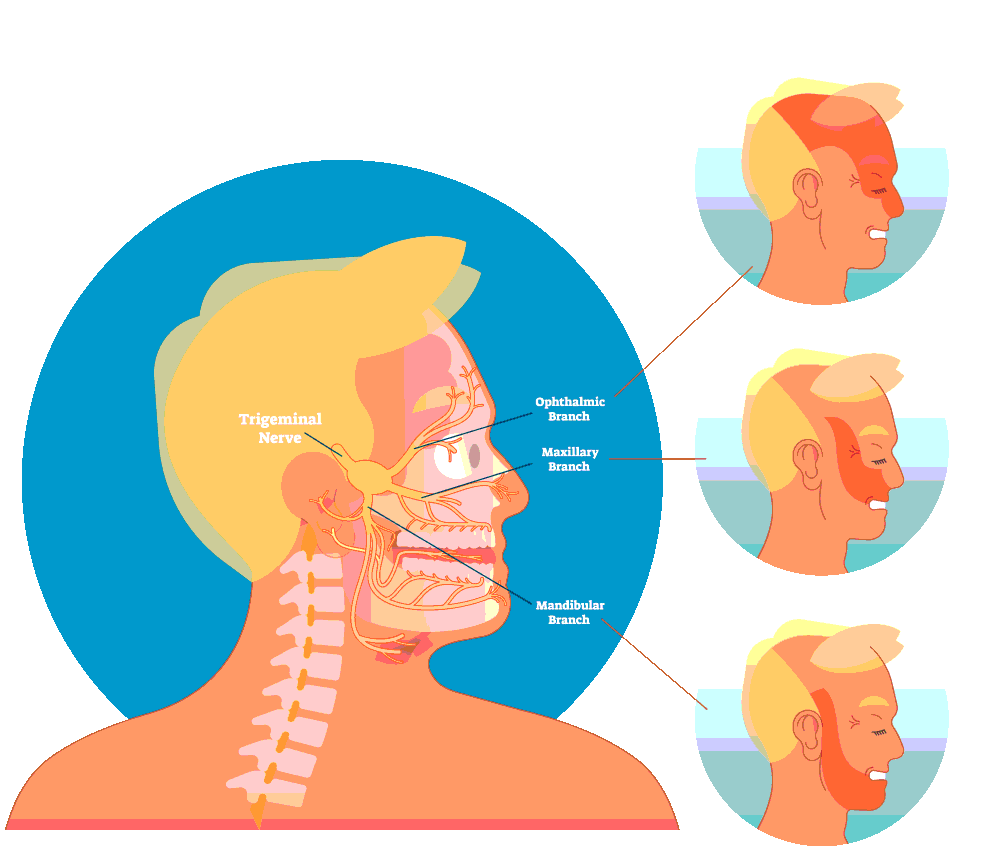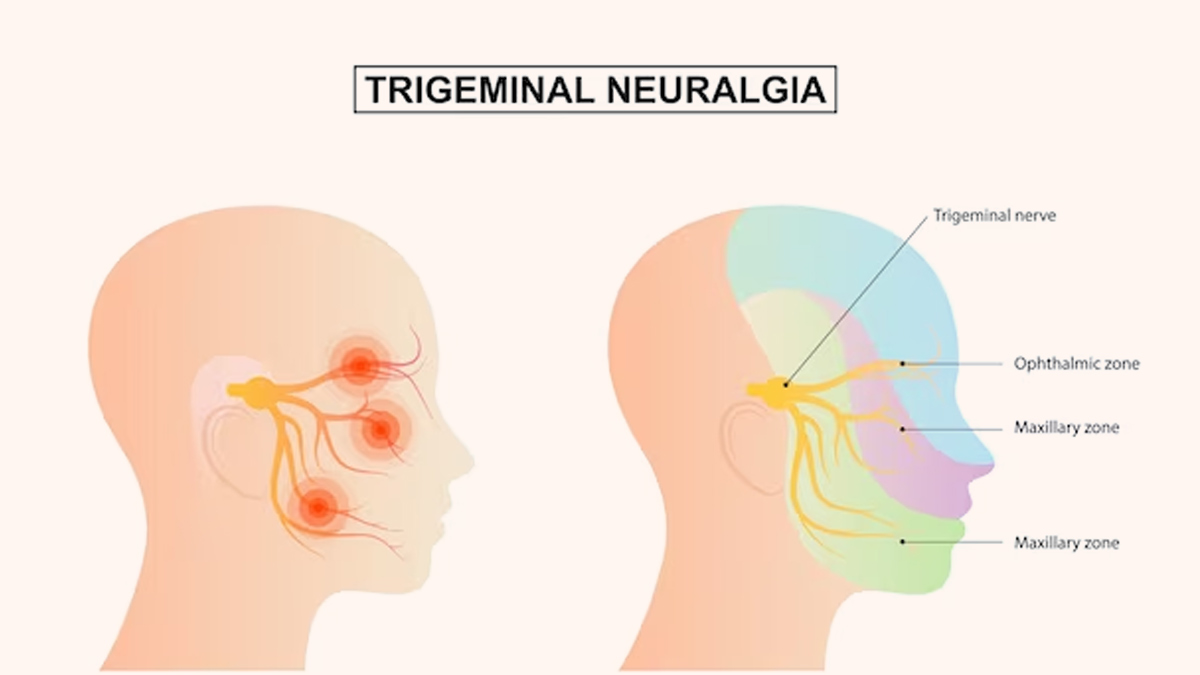Trigeminal neuralgia is a debilitating pain condition usually affecting one side of the face. Brain has 12 pair of nerves and trigeminal nerve is the 5th nerve of pain. When this nerve is affected by any means, this can lead to severe pain in face. The intensity of pain is such that many people consider even committing suicide; hence, this is also known as “suicidal disease”.
Trigeminal nerve has three branches- V1, V2 and V3 which supply forehead, mid-face covering cheek, nose, upper jaw and lower jaw respectively. The pain is intense, sharp, stabbing, electric-shock type, and lasts for few seconds to couple of minutes. Then, patients experience multiple episodes of such type of intense, stabbing, electric-shock type pain. As time progresses, some patients experience continuous dull-aching pain in between paroxysmal attacks.

There are various triggers like brushing, chewing, swallowing, talking, shaving and smiling which can bring out an acute severe attack of facial pain.
Cause of Trigeminal Neuralgia
Trigeminal neuralgia can be “primary and secondary”. In primary variety, usually an artery or vein compresses the nerve at brainstem level leading to irritation of nerve and subsequent manifestation of pain. In some instances, there is no cause for facial pain which is known as “idiopathic”. In some cases, (known as secondary cause), the trigeminal neuralgia can occur because of tumor in that region, multiple sclerosis, trauma, injury or cyst.
Symptoms
Usually one-side of face in either of 3 divisions (V1, V2 or V3), patients experience intense, sharp, stabbing, electric-shock type pain lasting for few seconds to couple of minutes. This type of severe pain can be incapacitating to many patients. Eating, chewing, brushing, shaving, talking and touch of cold breeze can trigger an acute severe episode of pain.
Many a times, patients think that pain is from dental cause and visit a dentist and even get the tooth extracted. But in trigeminal neuralgia, even after tooth extraction, the pain persists.
Diagnosis
Clinical history is the most important clue for diagnosis and response to a certain type of medicine is considered classical of trigeminal neuralgia. However, regular blood tests and MRI scan of brain helps in ruling out other causes and to find out if there is any compression of trigeminal ganglion by a blood vessel.
Treatment
1. Medical– Patients classically respond to a medicine called Carbamazepine. There are other second and third line medicines which may have to added in the later part of the disease course as patients may not respond to the first line drug.
2. Percutanous or Non-surgical treatment– In due course of time, a lot of patients do not respond to medical management and become resistant to therapy. In them, a variety of non-surgical treatment options are there.
(i) Radiofrequency ablation– In this condition, a small needle is inserted through an opening in the skull base to reach the trigeminal ganglion and then with heat application at a higher frequency, the ganglion is thermocoagulated precisely. This procedure helps in selectively ablating the affected part of trigeminal ganglion (either V1, V2 or V3). This is highly successful but numbness is a known side effect.
(ii) Glycerol-This procedure is similar to RF ablation but glycerol can non-selectively affect the whole ganglion.

(iii) Balloon microcompression-Similar to RF ablation but a balloon is inserted through a big cannula and inflated to provide decompression.
3. Stereotactic radiosurgery or gamma knife-Again another non-invasive procedure where ionizing radiation is precisely delivered at the ganglion level.
4. Surgery/Microvascular decompression– In young patients or others where vascular loop is found compressing the nerve, there surgical decompression can be done where a Teflon is placed between the ganglion and vascular loop so that the nerve recovers.

At Neuron Pain Clinic, we follow evidence based practice with medications, and then depending on type of trigeminal neuralgia, age and other medical conditions, treatment can be individualized. We perform percutaneous “radiofrequency ablations” frequently with high success rate and lowest complications.

